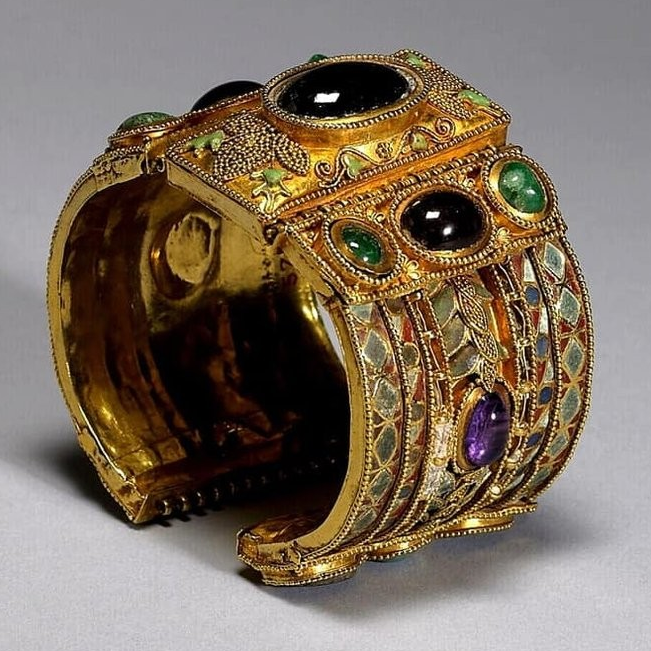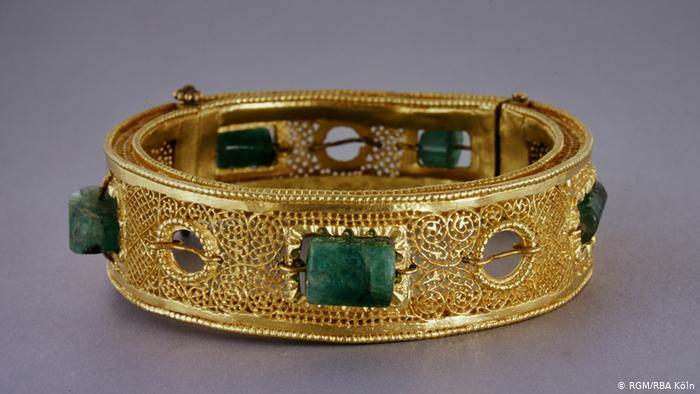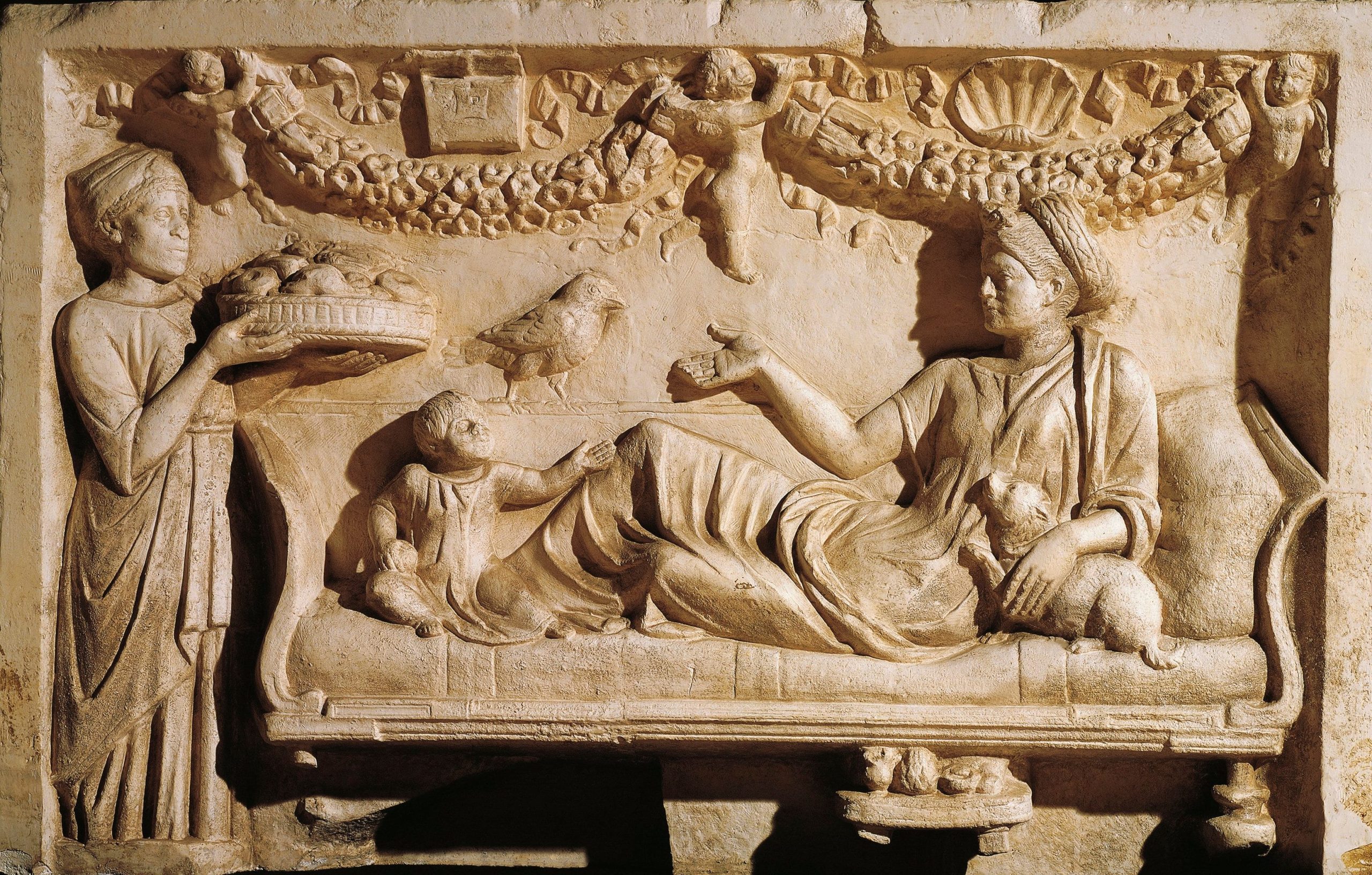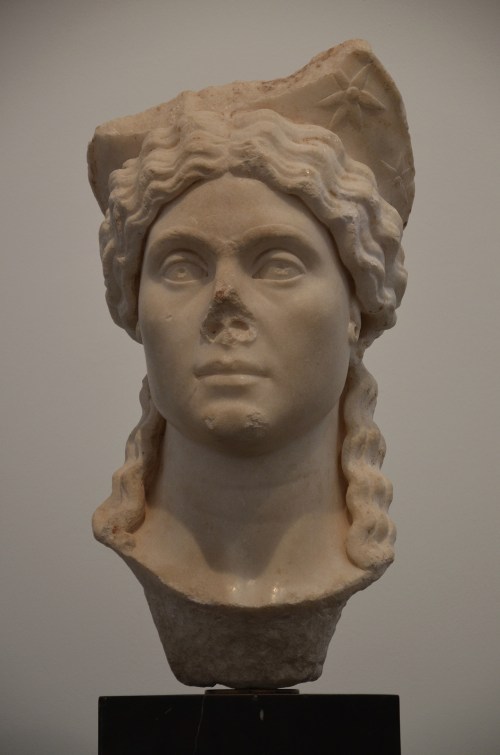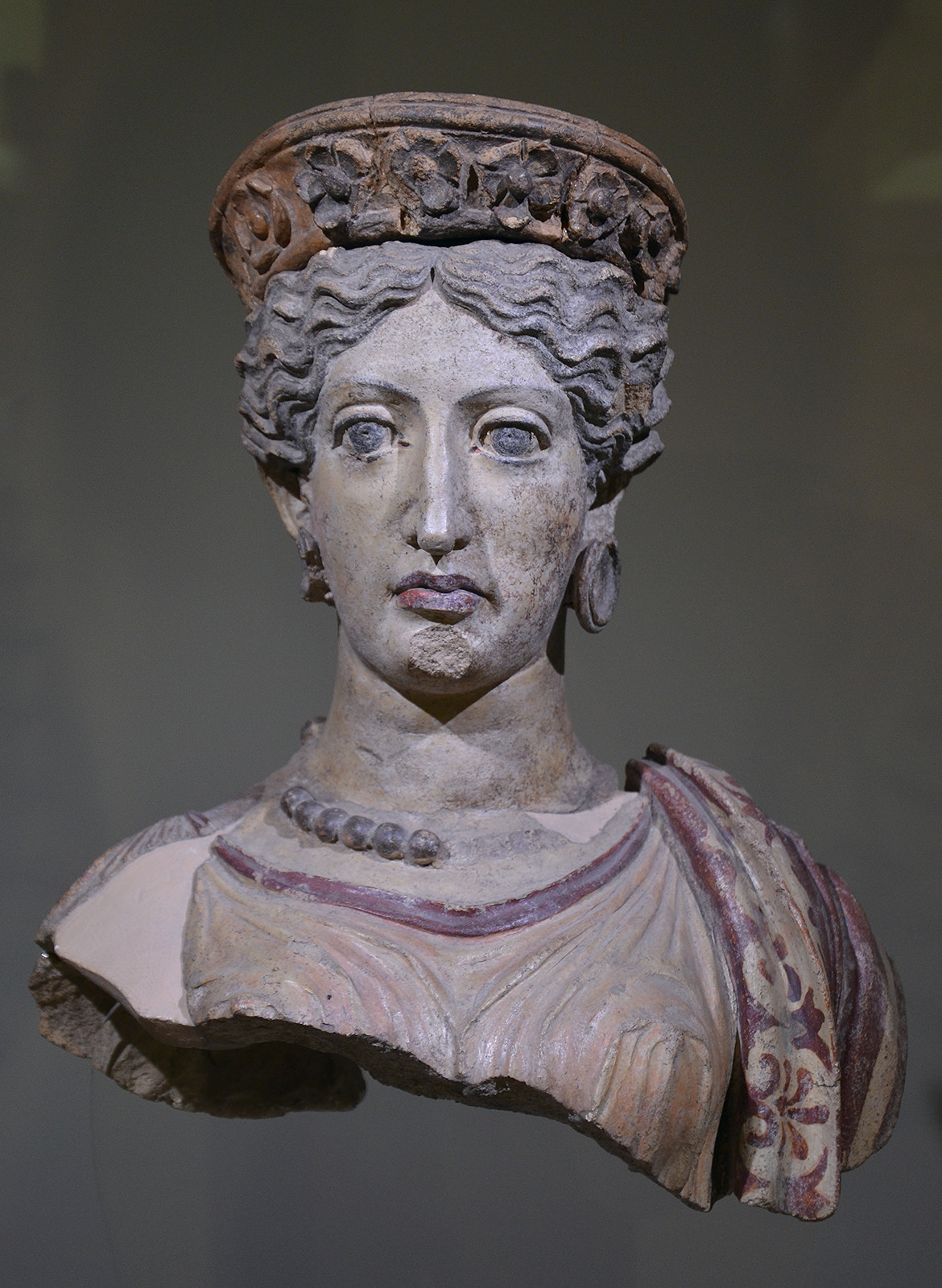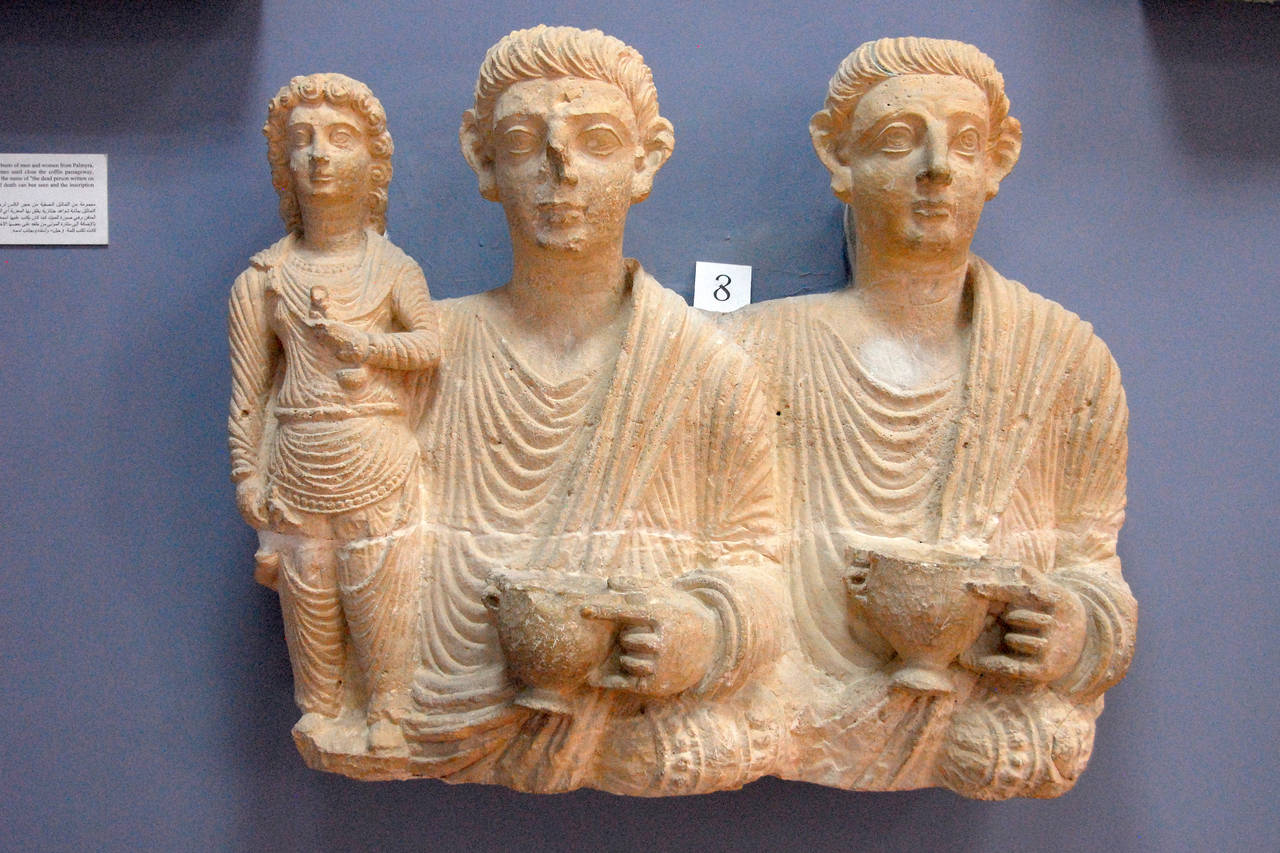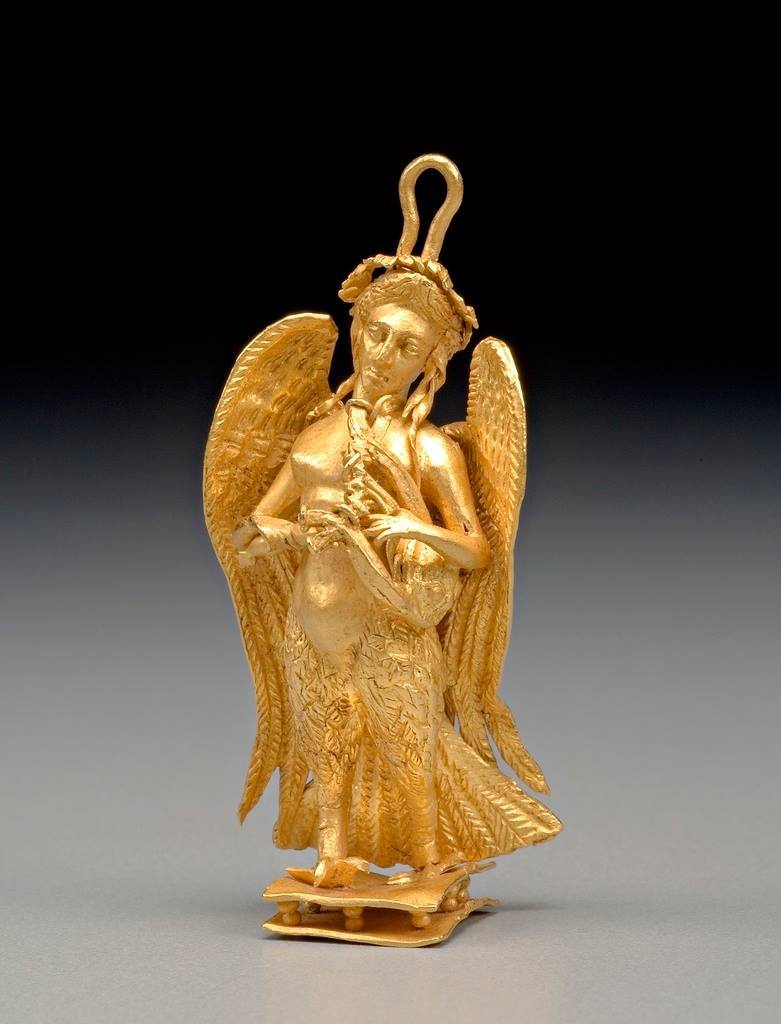Greco-Roman mummy found in Egypt
an article 2010 https://www.telegraph.co.uk/
“The Greco-Roman tombs, in Bahariya Oasis, 300 km (190 miles) southwest of Cairo, were discovered during probes that indicated they may be part of a much larger necropolis […]
A 97-cm (38-inch) tall female mummy, found in the stair-lined interior of one of the rock-hewn tombs, was cast in coloured plaster inlaid with jewellery and eyes.
Archaeologists, who dug at the site ahead of the planned construction of a youth centre, found the tombs contained other treasures as well.[…]
“Early investigations uncovered four anthropoid masks made of plaster, a gold fragment decorated with engravings of the four sons of Horus, and a collection of coins, and clay and glass vessels,” the ministry’s statement quoted Egypt’s chief archaeologist Zahi Hawass as saying.
The four sons of Horus – Imsety, Duamutef, Hapi and Qebehsenuef – were ancient Egyptian gods. The engravings show the influence of Egyptian religion well into the Greco-Roman period.”


Egyptian archaeologists discovered an intricately carved plaster sarcophagus portraying a tiny, wide-eyed woman dressed in a tunic in a newly uncovered complex of tombs at a remote desert oasis.
It is the first Roman-style mummy found in Bahariya Oasis some 186 miles southwest of Cairo, said archaeologist Mahmoud Afifi, who led the dig. The find was part of a cemetery dating back to the Greco-Roman period containing 14 tombs.
‘It is a unique find,’ he said, confirming that initial examinations indicate a mummy is inside the coffin.
The carved plaster sarcophagus is only 3 feet long and shows a woman wearing a long tunic, a headscarf, bracelet and shoes, as well as a beaded necklace. Coloured stones in the sarcophagus’ eyes gave the appearance she is awake.
Afifi said they had not dated the new find yet, but the burial style indicated she belonged to Egypt’s long period of Roman rule lasting a few hundred years and starting 31BC.
He said his team first thought they had stumbled across a child’s tomb because of its diminutive stature, but the decorations and features indicated it was a woman. Afifi said it was still unclear who the woman was but said it was most likely she was a wealthy and influential member of her society, judging by the effort taken on the sarcophagus.

Mummy of a ‘tiny, wide-eyed woman’ discovered in Egyptian oasis
https://archaeologistforhire.wordpress.com/category/mummies/

“A Roman-era mummy was recently unearthed in a Bahariya Oasis cemetery, about 190 miles southwest of Cairo.
The 3-foot-tall female mummy was discovered by Egyptian archaeologists. The figure was found covered with plaster decorated to resemble Roman dress and jewelry
In addition to the female mummy, the Supreme Council of Antiquities said archaeologists found clay and glass vessels, coins, anthropoid masks and 14 Greco-Roman tombs.
Director of Cairo and Giza Antiquities Mahmoud Affifi, the archaeologist who led the dig, said the tomb has a unique design with stairways and corridors, and could date to 300 B.C.”

https://dkhlak.com/12-most-mysterious-archaeological-finds-hard-to-explain/
A rare mummy of a Roman woman was discovered in Egypt https://www.ynet.co.il
“The archaeologist Mahmoud Afifi, who led the excavation, says that the woman, who is one meter tall, was buried in a sarcophagus made of plaster on which a female figure wearing a Roman robe and adorned with a scarf, necklace and bracelet was painted. Efifi pointed out that this is the first Roman style mummy found in Bakharia.
“We are convinced that this is a mummy of a woman,” said Zahi Hawass from the Egyptian Council of Antiquities to the AFP news agency. “Although mummies always tend to shrink, it is possible that this is a relatively small woman or child”
The date of the mummy’s embalming has not yet been determined, but the special burial style indicates that it belongs to the period when the Romans ruled Egypt”



